If you have recently updated your NVIDIA graphics drivers and or enabled Gsync or FreeSync on a brand new monitor and now have major flickering issues in games and programs like Photoshop, Premiere Pro, Davinci Resolve, etc. This article will show you several different things you can do to solve the problem and fix flickering when Gsync and FreeSync are enabled on your monitor.
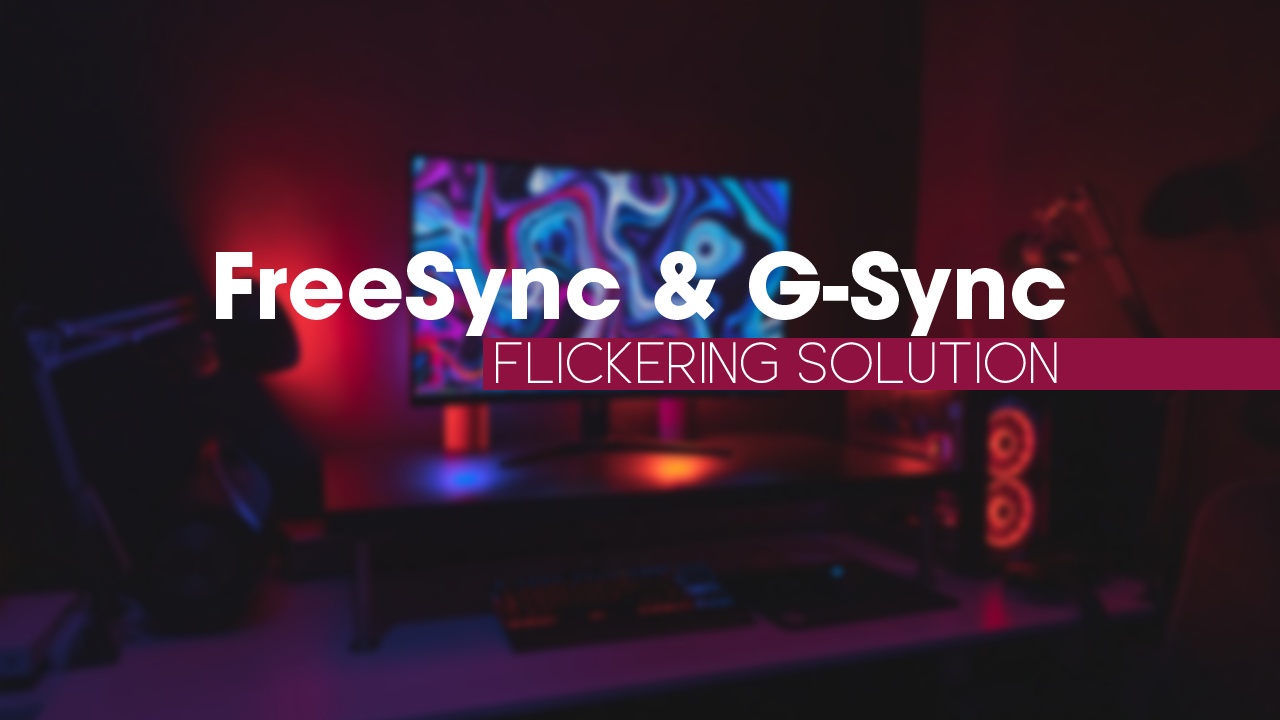
Takeaways:
- What is causing flickering when enabling FreeSync or G-Sync on Windows.
- How to fix flickering when G-Sync is enabled on Windows.
- How to fix flickering when FreeSync is enabled on Windows.
Table of Contents
How to Fix screen flickering when FreeSync or G-sync is enabled.
As we mentioned above this fix has multiple aspects to it so you will need to run through them in order to get the best results. Keep in mind that this is "potentially" a driver issue that NVIDIA hasn’t solved for a long, long time. While you can use each of these options individually I suggest trying them all at the same time.
Note: If you are using multiple monitors all connected to the same GPU try disconnecting all of the other monitors to see if the problem goes away. Having multiple monitors connected to a single GPU can sometimes cause interference issues, perhaps this is an issue with low-quality cable/port shielding or something else but it does make a difference sometimes.
OPTION 1: Disable Multiplane Overlay in Windows.
Oddly, but not surprisingly the flickering problem isn't Adobe or G-Sync. It is Microsoft! Windows has a feature called "Multiplane Overlay" which It has been known for years to cause a lot of flickering, green screens, stutters when resizing windows, and more... It does is makes the GPU combine multiple layers of content into a single image. This is supposed to reduce system resource requirements and save battery life. Disabling it will let your GPU render and display things the way it wants and "Should" stop all flickering issues across your system. This is also generally why you will encounter this issue a lot more when using multiple monitors.
- Open registry editor and go to:
Computer\\HKEY\_LOCAL\_MACHINE\\SOFTWARE\\Microsoft\\Windows\\Dwm
- Right click in blank space and click: New > DWORD (32-bit) Value
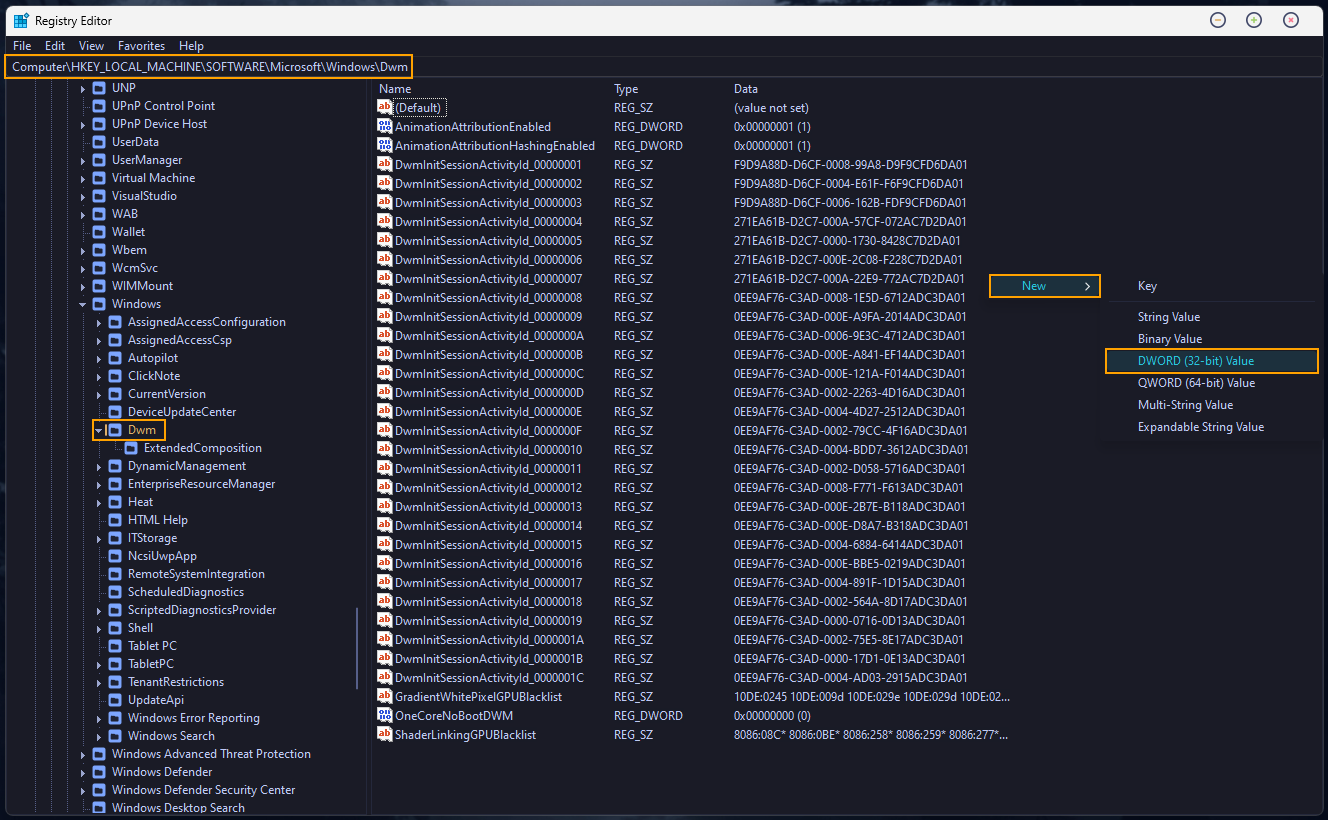
- Name it: OverlayTestMode
- Right click it and Select "Modify" then change the Value from 0 to 5 and click OK
- Restart your PC and you're done.
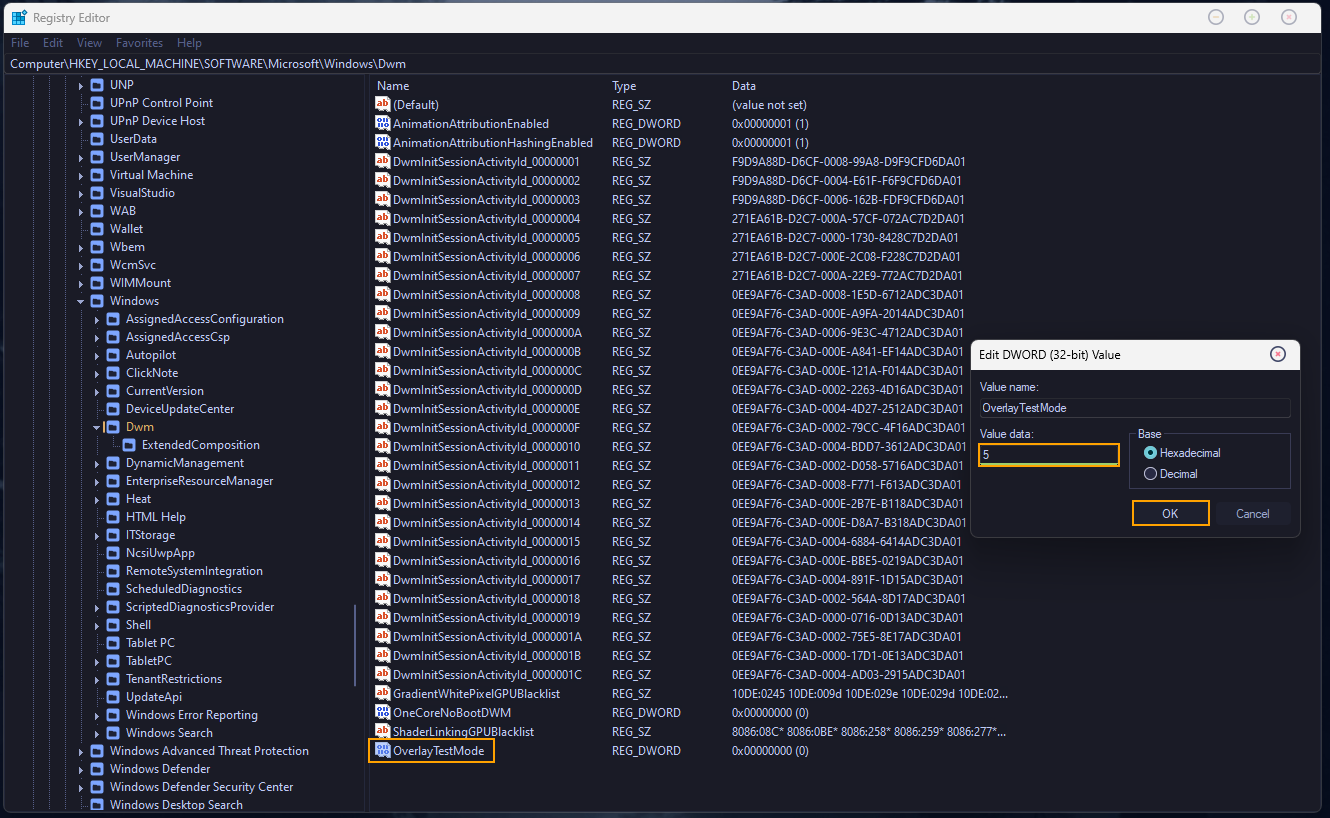
If you have any issues after doing this, just delete the entry you created and after a restart you should be back to normal. With flickering sadly.... If so work through the other 4 options listed below.
OPTION 2: Just use the Driver Windows installs.
Another driver solution you can use is to uninstall the official drivers from Device Manager, and then just let Windows install some generic driver. Whatever drivers Microsoft are using seem to work very well as well.
OPTION 3: Set a custom screen resolution in NVIDIA Control Panel.
The next thing you can try to stop flickering after enabling Gsync or FreeSync is to manually set a custom screen resolution in NVIDIA Control Panel.
- To do this open NIVIDA Control Panel then go to Display Resolution in the left panel.
- Next, select your monitor, then click Customise below the list of resolutions.
- A new window will open, here click Create Custom Resolution.
- Now in the next window configure your screen resolution to your monitor's maximum resolution, then set your max refresh rate to 1 frame under the max for your monitor. If you have a 144hz monitor set it to 143, etc.
- Now click Test, then accept the changes.
- Once it has been saved select your new Custom Resolution from the main Change Resolution page. Then click Apply to make sure it is set.
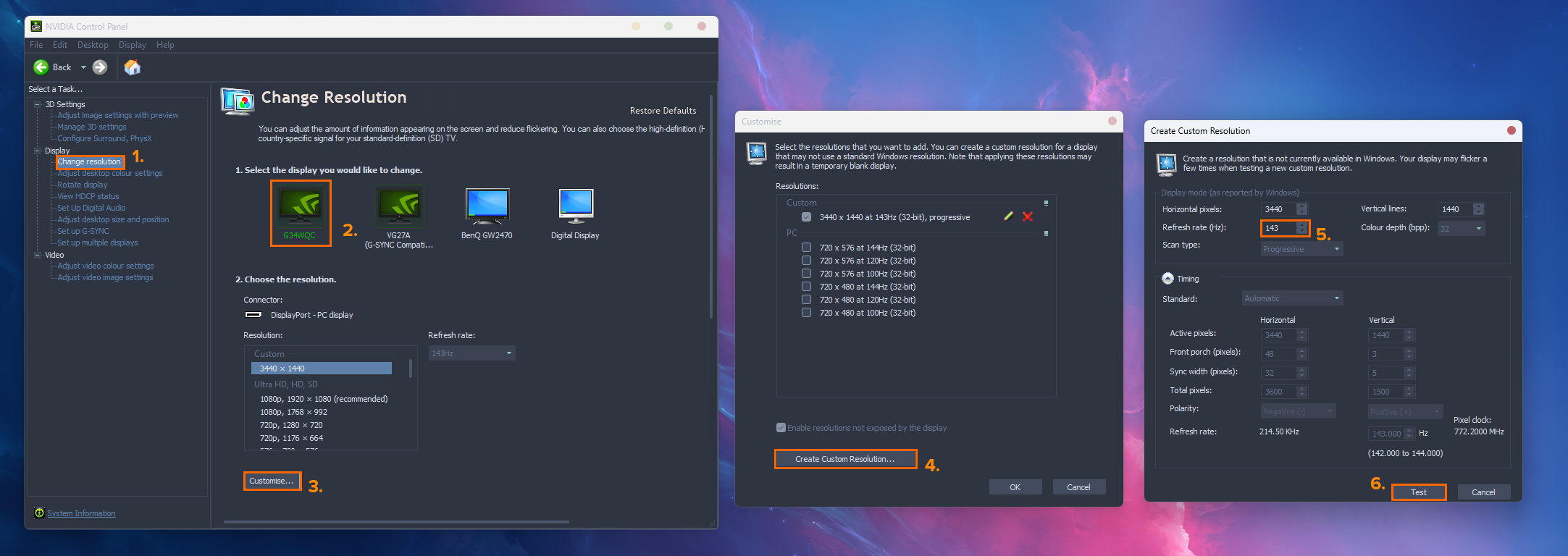
You can now start a game and check to see if the problem has been resolved. If it hasn’t you will need to complete OPTION 3 as well. They have a tendency to work best together.
OPTION 4: Set a custom maximum monitor refresh rate in NVIDIA Control Panel.
The final option and one that works best when used with the first two is to manually set a maximum refresh rate for your monitor in NVIDIA Control Panel.
- To do this open NVIDIA Control Panel, then change to the Manage 3D Settings tab on the left.
- Here scroll down and find the Max Frame Rate option and change the setting to 1 frame below your monitor's maximum refresh rate. If you have a 144hz monitor set it to 143, etc.
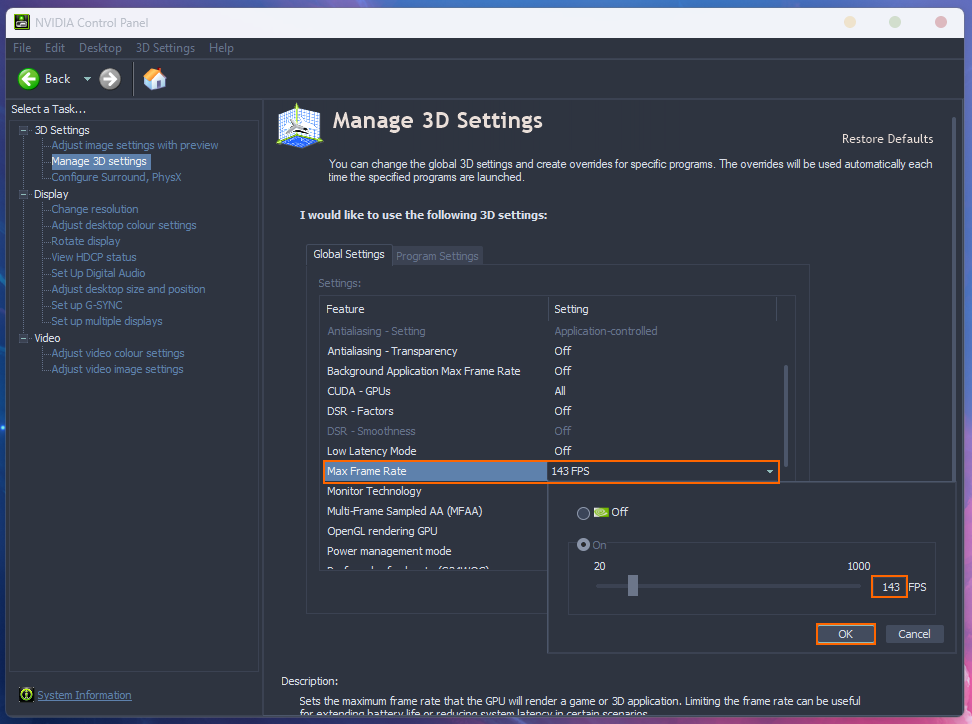
Once you have made the change you can check to see if your games work without any flickering. As we mentioned plenty of times before, all of these options work best when used at the same time, however, for obvious reasons using driver version 466.27 may not work for everyone. That said, there may be a newer and equally stable version in the mix, it’s just I haven’t found it yet.
Make sure that you also cap max FPS in the games you are playing.
Even after you have followed all of these steps you will still need to use the FPS capping options found in the graphics menu of games. Make sure you set this to the max possible FPS your monitor can go or slightly below it if the game has fully adjustable options. This will also help with flickering issues.
